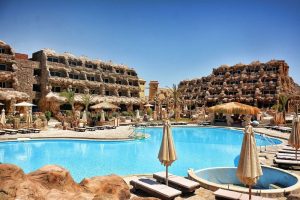Coral Bay holds a special place in my heart. From the first time I visited, I fell in love with this quiet, laid-back beach town, tucked away in the middle of nowhere. On one side, there’s vast, dry cattle country, where sheep roam and kangaroos leap. On the other, you’ll find pristine turquoise waters, white sandy beaches, and the Ningaloo Reef, home to an incredible diversity of marine life.
The town itself is small and charming. It’s got one hotel, a few backpacker spots, and an RV site — but most of the charm is in its simplicity. The main draw is a massive stretch of white sand beach, with crystal-clear water that seems to go on forever, and the reef so close you can swim to it straight from the shore.
When I was there in 2007, my days were filled with swimming with turtles, sunbathing on the beach, and unwinding with a cold beer as the sun set in fiery reds and oranges. It was paradise. Life in Coral Bay felt perfect, and I honestly could have stayed for weeks. Fast forward eight years, and I finally returned thanks to a partnership with Tourism Australia.
With tourism in Western Australia on the rise, I wondered if Coral Bay had changed. Would I find multiple new roads, more hotels, and bustling restaurants? Thankfully, when I arrived, the town still felt as peaceful as ever, just as I remembered it. It wasn’t overrun by development — it was still the quiet paradise I had fallen in love with.
On this trip, I decided to explore more than just the beach. I headed into the surrounding outback, where kangaroos hopped around and eagles soared above. Wildlife was everywhere, and it felt like an adventure just stepping outside the town.
Back at the beach, I snorkeled again in the Ningaloo Reef, and I was reminded just how special this place is. The Great Barrier Reef often gets all the attention, but I’d argue Ningaloo is even better. The coral is brighter, and there’s more marine life — from whale sharks and turtles to dolphins. Plus, it hasn’t been overdeveloped or overfished like some other reefs. Underwater, Ningaloo is teeming with life, and I saw far more action here than I ever did on the Great Barrier Reef.
If you visit between March and April, you might even catch the whale shark migration, or spot giant manta rays like I did. I joined a half-day snorkeling trip, and we got lucky enough to swim with some giant manta rays. These creatures are massive, way bigger than I imagined — about three times the size of a person!
What I love about Coral Bay is that it’s not your typical Aussie tourist destination. Its isolation keeps the crowds away, so it remains peaceful and untouched. Most visitors are Australians or travelers in campervans, and there are no large tour groups or throngs of tourists. It’s a far cry from the busy East Coast.
Honestly, there’s no place in Eastern Australia that compares to Coral Bay. Forget Cairns, Noosa, and Bondi Beach — if you want to experience the kind of beaches you see in ads for Australia, Coral Bay is where you need to go.
Part of me wants to keep it a secret, to hold onto my paradise just a little longer. But if you make it there, you’ll see why I love it so much.
How to Get There
Getting to Coral Bay is a bit of a trek. The nearest airport is in Learmonth, about two hours away. From there, you can take a shuttle bus for 95 AUD round-trip, or catch a coach service, though it only runs a few days a week for 50 AUD one-way.
If you’re driving from Perth, it’s a 12-hour road trip. From Broome, expect around 14 hours. Once you’re in Coral Bay, there are a few hotels, a hostel, and RV parks for accommodation, so you’ll have options for where to stay.
It’s a remote location, but it’s totally worth the journey.







